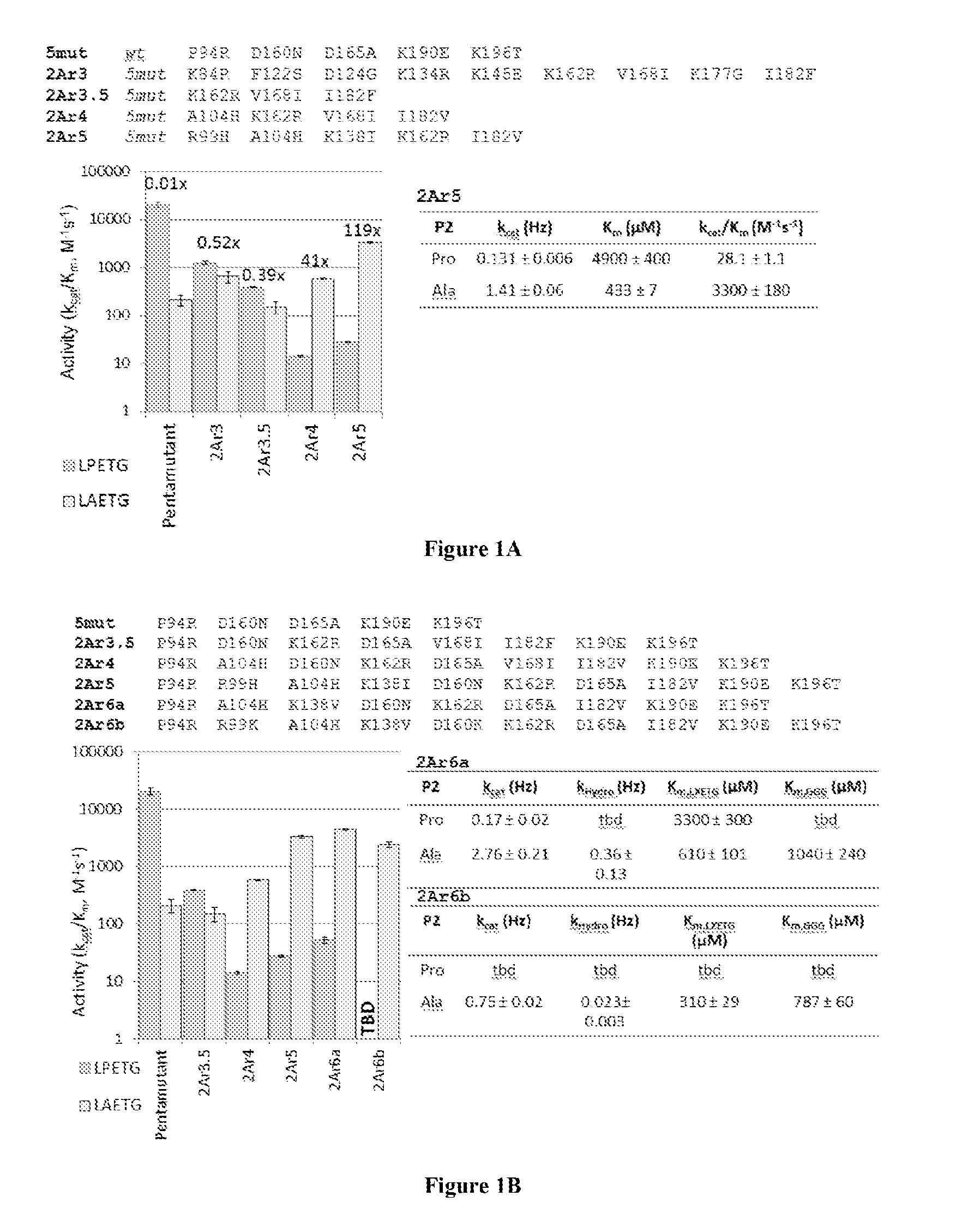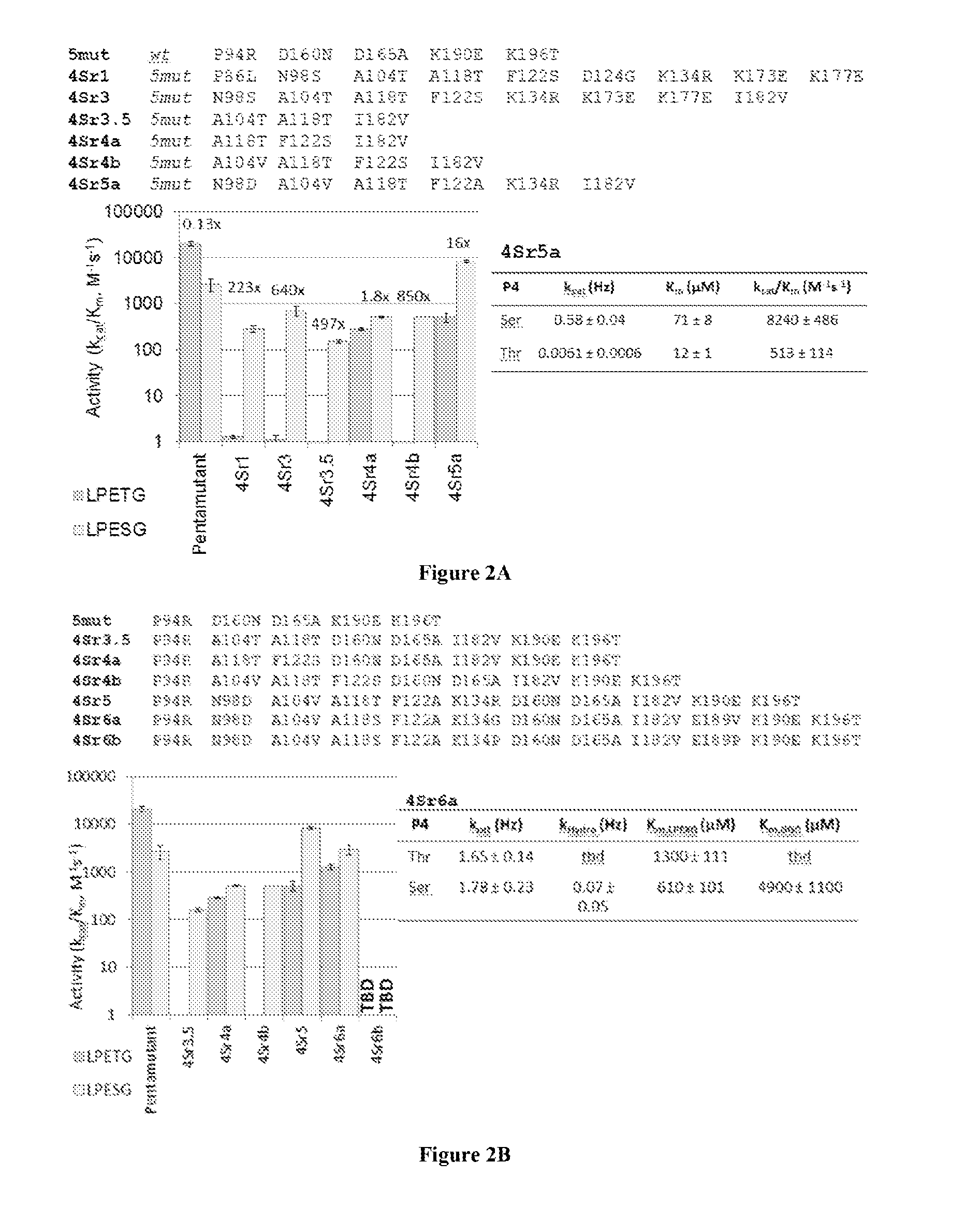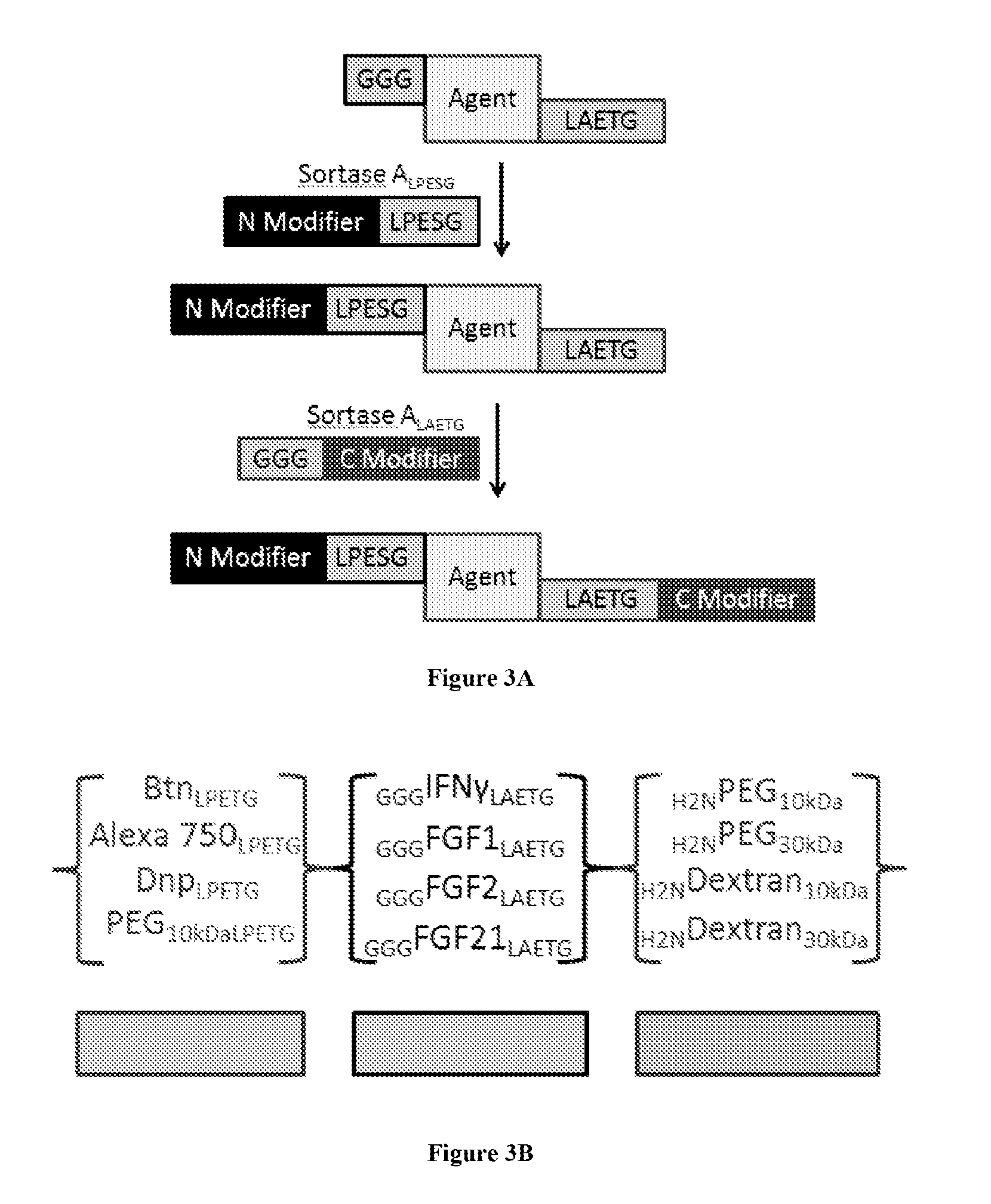Evolved sortases and use thereof
a sortase and variant technology, applied in the field of evolution of sortases, can solve the problems of limited spectrum of peptides and proteins that can be conjugated via sortases, inability to adapt to natural occurring enzymes, so as to improve the specificity, activity and/or thermal stability of sortase variants, modulate overall protein activity, and reduce the activity level
- Summary
- Abstract
- Description
- Claims
- Application Information
AI Technical Summary
Benefits of technology
Problems solved by technology
Method used
Image
Examples
example 1
Evolved Sortases Having Altered Substrate Specificity
[0147]Sortase A (SrtA) from Staphylococcus aureus was evolved (mutated) to recognize and catalyze transpeptidation of substrates having altered sortase recognition motifs as described previously. See, e.g., Liu et al., U.S. patent application Ser. No. 13 / 922,812, filed Jun. 20, 2013, and Chen et al., PNAS, 108(28):11399-404 (2011), the entire contents of each are incorporated herein by reference. SrtA was evolved to recognize substrates having the altered sortase recognition motifs of LAETG (SEQ ID NO: 5) or LPESG (SEQ ID NO: 3), as compared to the canonical or wild type motif of LPETG (SEQ ID NO: 4). This process yielded 6 mutants recognizing the motif LAETG (SEQ ID NO: 5)(2Ar3, 2Ar3.5, 2Ar4, 2Ar5, 2Ar6a, and 2Ar6b; FIG. 1), and 7 mutants recognizing the motif LPESG (SEQ ID NO: 3)(4Sr3, 4Sr3.5, 4Sr4a, 4Sr4b, 4Sr5, 4Sr6a, and 4Sr6b; FIG. 2).
[0148]As depicted in FIG. 1, SrtA mutants (evolved to recognize LAETG (SEQ ID NO: 5) motifs...
example 2
Evolved Sortases with Altered Substrate Specificity can be Used to Modify Proteins at Either or Both the N- and C-Terminal
[0150]In order to test the utility of orthogonal Sortases for the construction of dual N- and C-terminally labeled material, GGG-FGF2 / 21-LPESG-HHHHHH (SEQ ID NO: 27) constructs were tested for SrtA reactivity. In brief, 10 uM of GGG-FGF-LPESG (SEQ ID NO: 3) construct was incubated for 1 hour in 100 mM Tris pH 7.5, 500 mM NaCl, 5 mM CaCl2 with one of 100 uM GGG-Biotin or 100 uM Biotin-LPESG and 5 uM SrtA. These reactions were quenched by the addition of 0.1 eq of SDS loading buffer, boiled, and then subjected to western blot analysis for the presence of Biotin and HisS moieties. In each case, biotinylation signal was observed in cognate pairs (e.g., SrtALAETG (SEQ ID NO: 5) / GGG-Biotin or SrtALPESG (SEQ ID NO: 3) / Biotin-LPESG (SEQ ID NO: 3)) but only in limited form in non-cognate pairs (FIGS. 6A and 6B) Target labeling was unambiguously identified by analysis of t...
example 3
Evolved Sortases can be Used for Specific Modification of Tissues
[0151]Tissue staining was performed as described previously, with biotin signal false colored in red and DAPI stain false colored in blue. In each case, total integrated biotin signal was computed for both negative control and SrtA+ samples, then background subtracted and used to calculate the total fluorescence enrichment shown in FIG. 10. Those tissues with significant biotin signal are shown in subsequent figures, often exhibiting significant labeling of tissue brush borders (FIGS. 11, 12, 13, and 15), of spermatids (FIG. 17), or of broad tissue material (FIGS. 14 and 16).
PUM
| Property | Measurement | Unit |
|---|---|---|
| molecular weight | aaaaa | aaaaa |
| pH | aaaaa | aaaaa |
| reaction rates | aaaaa | aaaaa |
Abstract
Description
Claims
Application Information
 Login to View More
Login to View More - R&D
- Intellectual Property
- Life Sciences
- Materials
- Tech Scout
- Unparalleled Data Quality
- Higher Quality Content
- 60% Fewer Hallucinations
Browse by: Latest US Patents, China's latest patents, Technical Efficacy Thesaurus, Application Domain, Technology Topic, Popular Technical Reports.
© 2025 PatSnap. All rights reserved.Legal|Privacy policy|Modern Slavery Act Transparency Statement|Sitemap|About US| Contact US: help@patsnap.com



